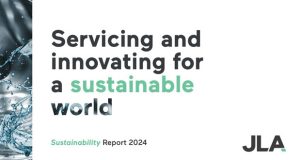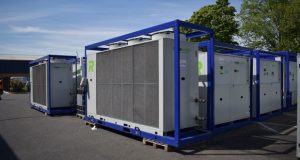By Peter Burbidge, Pressac
Although there are several schools of thought about the how, why, and when in terms of returning to work, there is one thing all parties can agree on. Any return must be done safely.
A major factor in how smooth the return is will depend on how workers feel about their own health, safety, and wellbeing in the workplace. And this is where property technology (Proptech) comes in.
As companies evaluate their office space needs, many are asking questions like:
· How will the office environment mitigate the risk of Covid-19 transmission?
· Can we efficiently share office space for effective hybrid working?
The Proptech solutions
For every question, there’s a Proptech answer.
How will the office environment mitigate the risk of Covid-19 transmission?
Peace of mind starts with the basics. Especially in our Covid and post-Covid times. Making sure office spaces are clean and inviting can encourage people back into the workplace, after working from the comfort and security of their own homes.
Hygiene, a huge focus of the pandemic, will likely become part of a wider wellness agenda. Smart sensor solutions which can monitor and identify areas that need cleaning could play an essential role in a hybrid working environment.
Monitoring indoor air quality is another factor to consider. We are all much more conscious of the importance of good ventilation to reduce transmission. Environmental sensors can monitor temperature, humidity and CO2 levels, so HVAC systems can be automatically adjusted to maintain optimum indoor conditions. Plus, when HVAC responds intelligently based on need, rather than just operating at full speed throughout the day, it saves energy.
This enhances the property’s green credentials, making the building healthier and more sustainable.
Many organisations have also moved to a touchless check-in for visitor management, and this is likely here to stay. Using biometric technology for identification and access is a great way to reduce the number of communal touchpoints in a building.
Meanwhile, AI-powered temperature-check technology is another string in the safety bow for organisations. This uses infrared camera technology to establish a baseline temperature for each employee, sounding an alert at the approach of an individual when temperature is elevated.
Can we efficiently share office space for effective hybrid working?
Occupancy management — that doesn’t violate privacy — will be essential for shared spaces. Smart workspace management solutions can offer reassurance about things like social distancing and maximum occupancy.
Desk and room occupancy sensors can provide accurate data to support desk booking or trigger a cleaning schedule. People flow sensors detect people going in and out of a doorway automatically and in real time. There are no cameras, so no privacy issues. This data can help monitor the number of people in a room and alert for maximum occupancy.
The new standards for our workplaces
As companies in every industry grapple with the implications of returning to the office, from productivity to public health, Proptech can do a lot to ease common anxieties.
In fact, Proptech is no longer a ‘nice-to-have’ aspect of our working environment. It’s become a ‘must have’, necessary to meet the expectations around higher standards of healthier, safer, and cleaner workspaces, aligned to more flexible working patterns.
Digitising an office building and using real-time data to drive decision making can support the return to the workplace, offering reassurance and peace of mind to occupants.
For more Proptech insights visit https://www.pressac.com/
-ends-
To have your industry news published in the pages of FMJ’s news section, Month in FM, and here online on fmj.co.uk, please send your news and image to Danny Grange danny.grange@kpmmedia.co.uk
The view or information contained within these unedited press releases, are that of the company producing it and not necessary the views of kpm.





